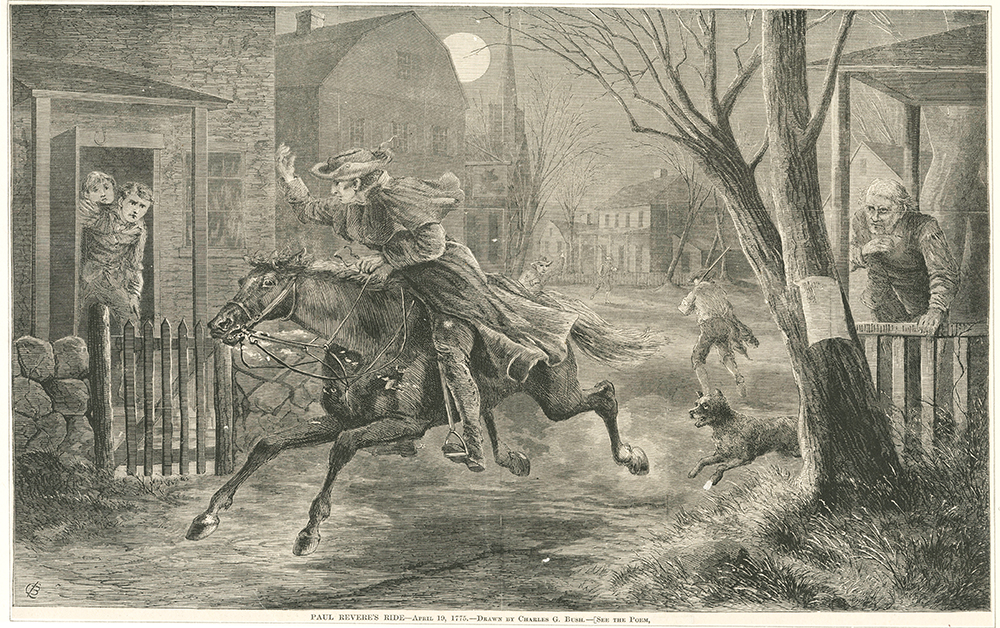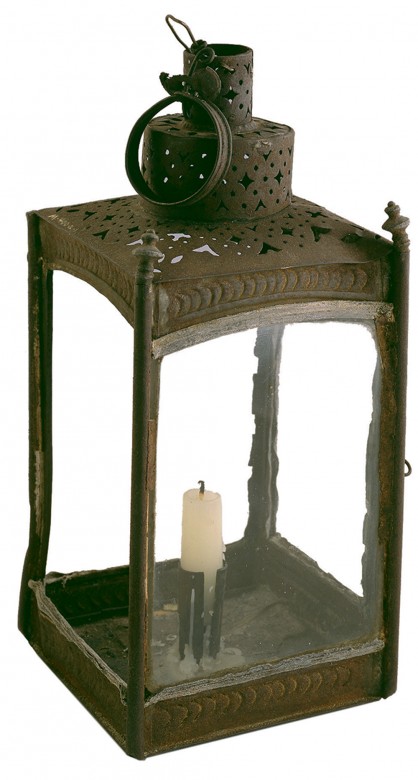Legendary Light: The Revere Lantern at the Concord Museum in Concord, Massachusetts
More than just a luminary sidekick, the Revere Lantern at the Concord Museum helps narrate the most exciting night in our nation’s early history.

Coffee By Design | Portland, Maine
Photo Credit : Katherine KeenanIf ordinary objects become extraordinary through the tales they tell, a visit to Massachusetts’ Concord Museum offers more than a few examples of top-notch storytelling. Yet one angular display of tinned iron and glass speaks most loudly: “Lantern,” the label says, “probably England 1765–1775.” Most know it simply as “the Revere Lantern.” A commanding costar in a key event in Early American history, it has since become a symbol of patriotic pride, the pursuit of freedom, and perhaps the best-known light fixture in the world.
The tale is a familiar one. On the evening of April 18, 1775, volunteer couriers Paul Revere and William Dawes, above, set off from Boston toward Lexington to warn Samuel Adams and John Hancock that after months of tension and unrest, the British were en route to disarm the rebels. Worried about their possible interception of the warning, the colonists also hung two lanterns in the bell tower of Boston’s Christ Church—a prearranged signal meaning that the Redcoats were arriving by sea. The events that followed—from the Battles of Lexington and Concord the next day to Henry Wadsworth Longfellow’s epic poem “Paul Revere’s Ride” a century later—helped cement that flash of lantern light and the cry “The British are coming!” as the stuff of patriotic legend.

Photo Credit : courtesy of Concord Museum/David Bohl
For the Concord Museum’s curator, David Wood, the sole surviving Revere Lantern, purchased from Christ Church in 1782, is also valuable for the story it tells about the weeks and months preceding the events of that April night. “What it does for me,” he notes, “is sum up the level of preparedness on the part of the provincials.” The lantern signal—“such a clever, practical little device”—shows that the battles that followed, though explosive, were hardly unanticipated, or even unwelcome, Wood says: “The lantern proves that they were more prepared [for an invasion] than they were letting on, and they were looking for any opportunity to pull it off.”
Today, the Revolutionary spirit represented by the Revere Lantern is so engrained in America’s story that Christ Church (now Old North Church, in Boston’s North End) regularly draws both Freedom Trail tourists and political hopefuls in search of the perfect photo op. It’s worthy of a visit but lacking in one essential detail. For that, my children, you’ll have to plan your own ride to Concord (we hear daytime is best), where an extraordinary 18th-century antique awaits.
Concord Museum. 53 Cambridge Turnpike, Concord, MA. 978-369-9763; concordmuseum.org








Enjoyed this article and it brought back memories of seeing this lantern at the Concord Museum. Thanks!
Glad to hear that you enjoyed it, Anne!